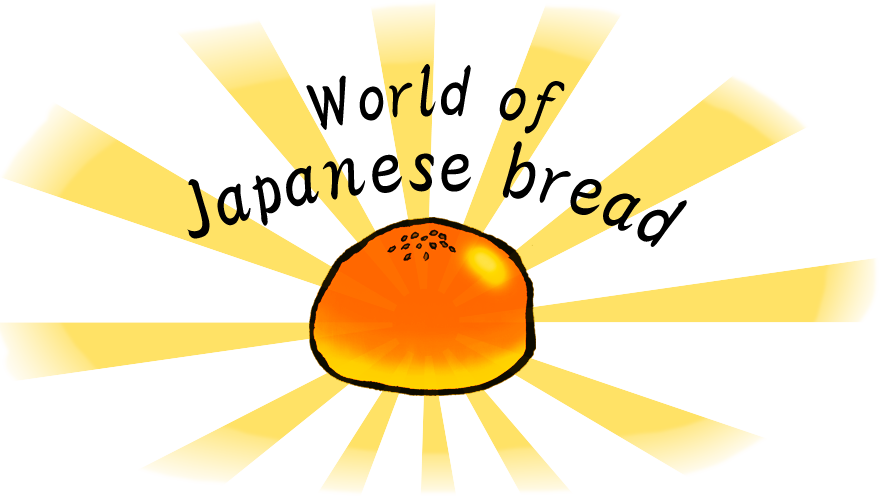
Did you know that “Anpan” and “Curry-pan” were invented in Japan?
This scroll describes various kinds of Japanese bread.
Let’s take a look at the “World of Japanese Bread!”

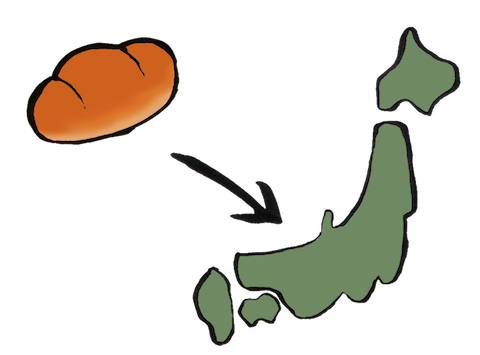
Bread was originally brought to Japan in the 16th century by Portuguese missionaries.
The word “pan” comes from Portuguese “pao,”
and was originally from Latin “pan.”
Japanese people at the time knew very little about bread.
However, early in the Meiji period (1868-1912),
when “an-pan” was invented, bread began to become popular.
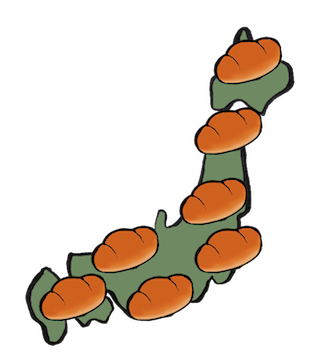
Many people began to eat bread during World War One.
However, during World War Two, ingredients were in short supply,
and bread began to disappear from Japan.
After World War Two, America sent relief provisions,
and various kinds of bread began to reappear in Japan.

Below, various kinds of Japanese bread are introduced.
You may be familiar with the names of Japanese bread, but you may not know the history.
We would be delighted if you find this background informative and interesting.
Come let’s explore the uniqueness of Japanese bread!
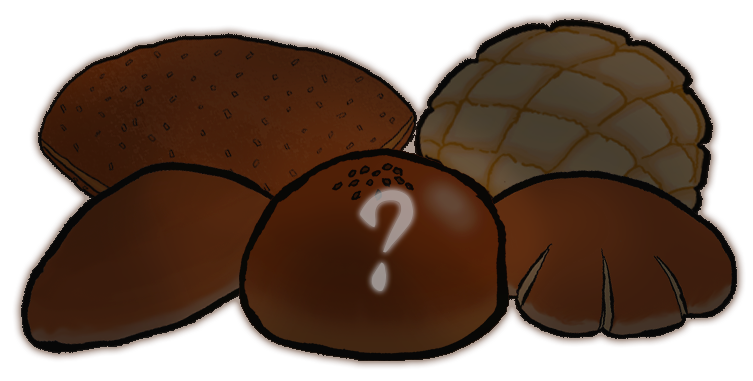

Anpan virtually represents Japanese bread.
It was invented at an old shop called Kimura-ya, which is still in operation today.
Anpan contains
Anko, which is jam that is made from adzuki beans.
There are many kinds of Anko in Anpan, including
Matcha paste and green pea paste.

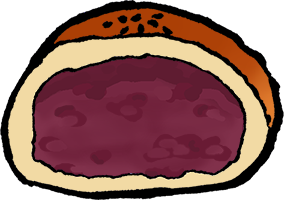

Jam-pan was invented at Kimura-ya in the late Meiji Period (1868-1912),
the same shop where Anpan made its debut.
Jam-pan is shaped like a half moon. It contains jam instead of Anko.
There are
many kinds of Jam-pan, including blueberry and orange.
Originally, Jam-pan used apricot jam.
Now, however, many different kinds of jam are used, including apple and strawberry.



Cream-pan contains sweet cream instead of Anko.
Cream-pan was invented at a shop called Nakamura-ya, a rival of Kimura-ya.
Cream-pan looks like a fist. Cream-pan uses many different kinds of cream.
The taste changes dramatically, for example, by using fresh cream. The varieties are infinite.
[
Let’s have tea time! ]

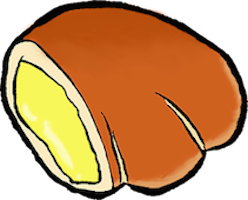

Curry-pan is fried bread with
curry roux inside.
Curry-pan was created in a store called “Yoshoku-pan,” or “Western Bread,”
in Morishita Meikado in Tokyo.
Curry-pan uses many kinds of curry roux.
There are different levels of spiciness, so anyone from kids to adults can enjoy it.



Melon-pan looks like muskmelon (not fruit melon).
The outside is hard like a cookie, and the inside is soft.
It has a sweet flavor and interesting texture (It doesn’t taste like melon).
It’s precise origin is unknown, but it is said to have existed at the same time as Anpan,
in the Taisho Period (1912-1926).
Much loved by Japanese, Melon-pan often appears in Japanese school lunches.
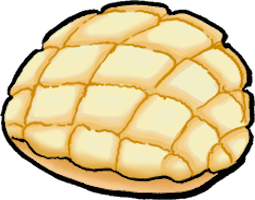
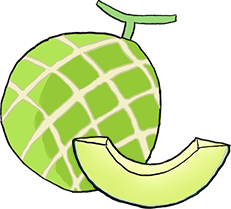
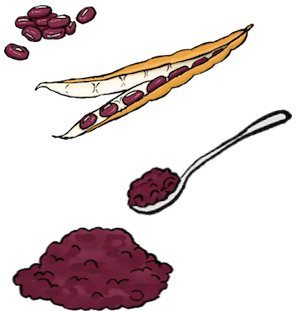
"Anko" is jam made from adzuki beans.
Anko is widely used in Japanese confectioneries.
There are various kinds of Anko.
For example, "chestnut-An" is Anko with chestnuts inside.
"Sakura-An" is Anko with salted cherry blossoms inside.
"Uguisu-An" is jam made from peas instead of adzuki beans.
It has the color of a bird known as a Japanese nightingale.
"Shiro" means “"white" in Japanese.
"Shiro-An" is a white jam made from kidney beans
instead of adzuki beans.
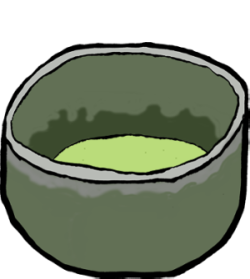
“Matcha”is powdered green tea.
It has been loved by Japanese for countless generations.
It is tea leaves that have been steamed, dried, and powdered.
Matcha powder is sometimes used in cooking.
Or, you can drink Matcha by mixing it with hot water.
Matcha is often used in Japanese confectionery items.
“Anko” is also often used in confectionery items,
and Matcha goes well with it.
You can enjoy Matcha with Anpan.

“Jam-pan” usually contains strawberry or
apple jam.
However, many kinds of jam
can be used in “Jam-pan.”
Jam goes well with tea.
So, Jampan goes better with tea
than you might imagine.

Cream-pan also goes well with
brown or green tea because it is very sweet.
It’s perfect for tea time!
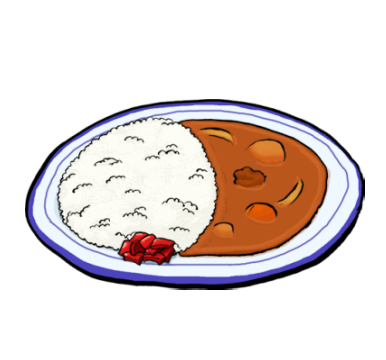
“Curry is traditionally used in Indian cuisine.
However, Japanese curry is different.
Japanese curry roux is thickened with flour.
Most commonly it is served over cooked rice.
This dish is called “curry-rice” in Japan.
Curry was introduced to Japan from England
during the Taisho Period (1912-1926),
and evolved from there.
Basic Japanese curry roux contains several spices,
including turmeric, and vegetables and meat.
Curry-rice has become a very traditional Japanese dish.





















 "Anko" is jam made from adzuki beans.
"Anko" is jam made from adzuki beans. “Matcha”is powdered green tea.
“Matcha”is powdered green tea. 

 “Curry is traditionally used in Indian cuisine.
“Curry is traditionally used in Indian cuisine.